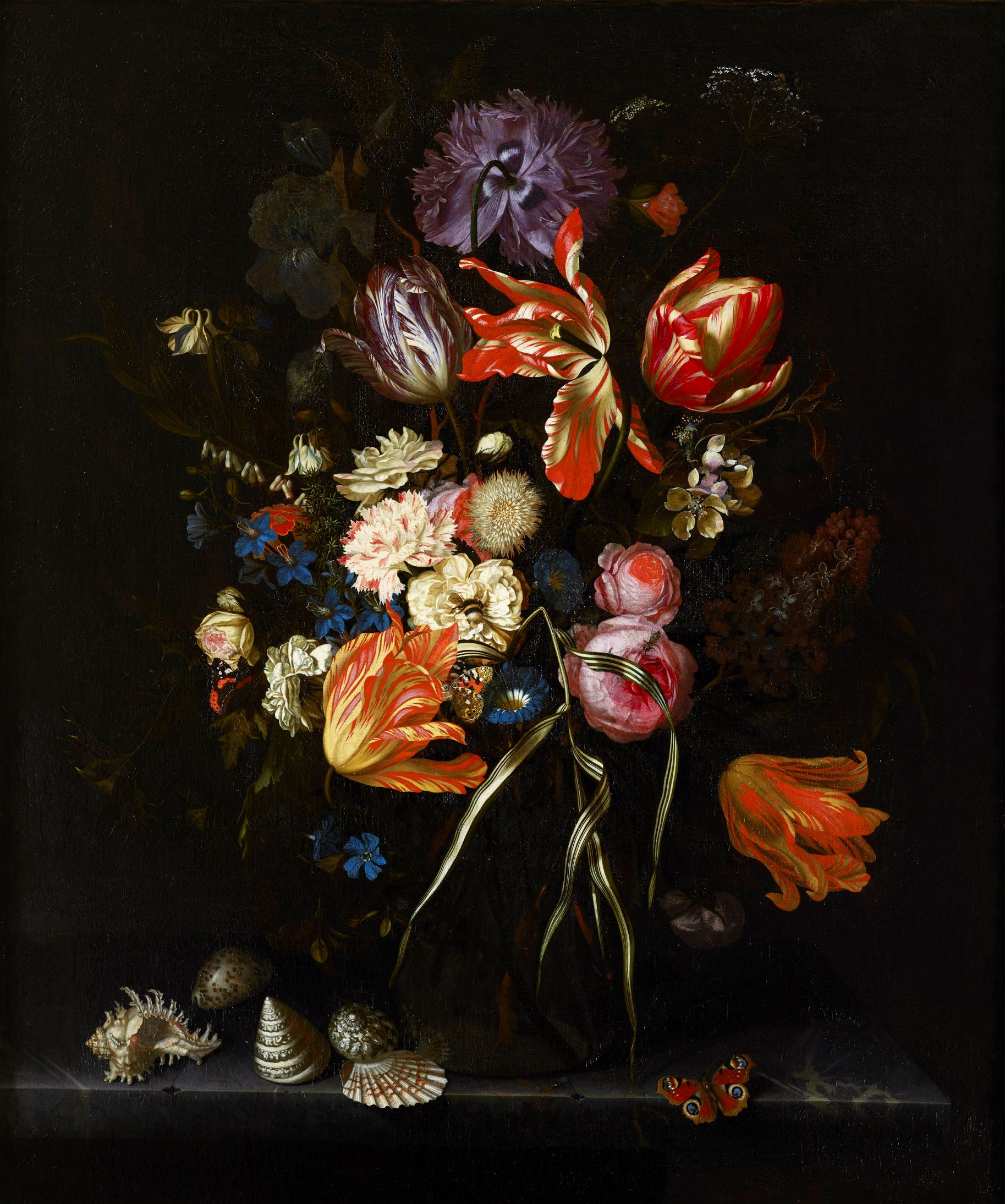The Joslyn Art Museum announced the purchase of a seventeenth-century canvas, Still Life of Flowers in a Glass Vase (about 1685), by Dutch artist Maria van Oosterwyck (1630–1693). One of the few female painters active in Holland in the 1600s, Van Oosterwyck was a master of the floral still life. She enjoyed great success in her lifetime and counted King Louis XIV of France and King William III of England among her patrons. Her elegant floral arrangements set against dark backgrounds were especially admired for their diversity of flora, a characteristic exemplified in Joslyn’s painting.

Maria van Oosterwyck (1630–1693), Still Life of Flowers in a Glass Vase, ca. 1685
Joslyn Art Museum, Omaha
Taylor J. Acosta, Ph.D., Joslyn’s associate curator of European art noted, “Of the known works by Van Oosterwyck, this painting is one of the most significant in terms of quality and scale. The meticulous attention to detail and the great variety of blooms, as well as the inclusion of insects and shells, make this an excellent example of the genre.” The first floral still life to enter Joslyn’s collection, Still Life of Flowers in a Glass Vase represents an important step in diversifying the Museum’s collections. “Joslyn is actively working to increase the representation of women artists in its collections, and this addition marks the earliest example in the European collection,” said Dr. Acosta. Held in the same private collection for several generations, Joslyn’s acquisition of Still Life of Flowers in a Glass Vase, through Ben Elwes Fine Art, London, makes this extraordinary painting accessible to the public for the first time in over a hundred years.
A unique feature of this painting is its frame, which is original and includes metal hooks to which a rod with a silk curtain would have been attached. In seventeenth-century Holland, curtains served to protect paintings from exposure to light, smoke, and accidental scratches. At the same time, the act of drawing back the curtain also added a sense of drama to the unveiling and underscored the importance of the work of art, as it was only to be revealed to a select audience. While the practice of covering paintings with curtains was not uncommon in Holland in the seventeenth century, finding a frame with its original metal hooks like this is rare.
“There are only a few examples of original picture curtain rod attachments on seventeenth-century frames,” noted Hubert Baija, senior conservator of frames and gilding in the department of conservation and research at Rijksmuseum Amsterdam. “A study of Dutch frames published in 1984 identifies three such frames, and the work Joslyn purchased is the only other surviving example I have come across during thirty years of tenure at the Rijksmuseum. The Van Oosterwyck painting, which retains its original frame, is a truly unique acquisition for any art museum.”
In the case of Still Life of Flowers in a Glass Vase, a new rod and green silk curtain have been fabricated according to historical examples. This restoration makes it possible for a contemporary audience to experience the work as it would have originally been displayed. While the restored rod and curtain will not be part of the daily presentation of the work at Joslyn, they will be added on special occasions or for educational purposes.

